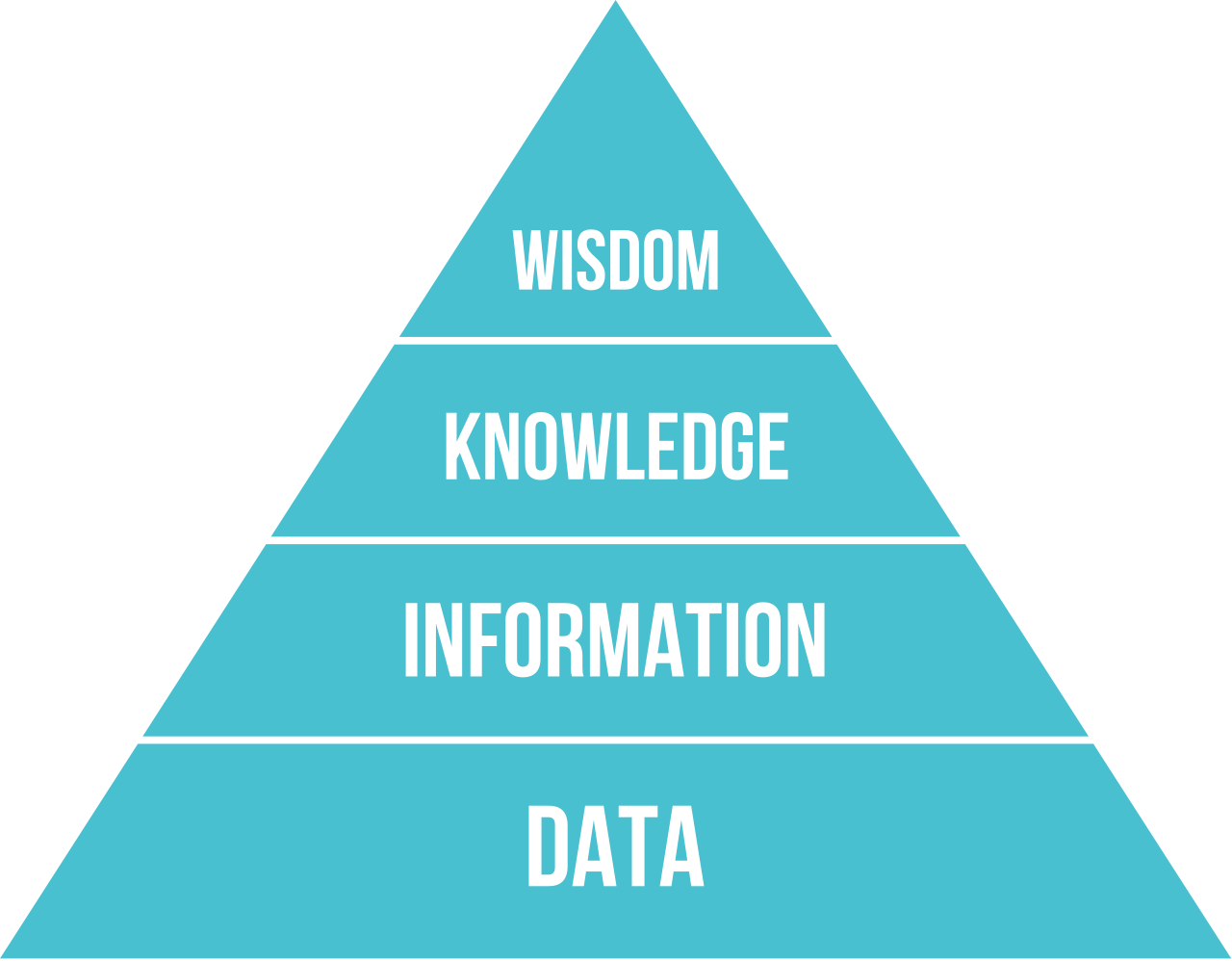The noetic prism

Image copyright Wikipedia user Longlivetheux, CC BY-SA 4.0 International license
Casual allusions to the data, information, knowledge, and wisdom (DIKW) pyramid are rife in computer science and IT articles and presentations. I came across one this week, and was reminded of an article I read a few years ago by Diarmuid Pigott, “The Noetic Prism”:
Definitions of ‘knowledge’ and its relationships with ‘data’ and ‘information’ are varied, inconsistent and often contradictory. In particular the traditional hierarchy of data-information-knowledge and its various revisions do not stand up to close scrutiny. We suggest that the problem lies in a flawed analysis that sees data, information and knowledge as separable concepts that are transformed into one another through processing. We propose instead that we can describe collectively all of the materials of computation as ‘noetica’, and that the terms data, information and knowledge can be reconceptualised as late-binding, purpose-determined aspects of the same body of material. Changes in complexity of noetica occur due to value-adding through the imposition of three different principles: increase in aggregation (granularity), increase in set relatedness (shape), and increase in contextualisation through the formation of networks (scope). We present a new model in which granularity, shape and scope are seen as the three vertices of a triangular prism, and show that all value-adding through computation can be seen as movement within the prism space. We show how the conceptual framework of the noetic prism provides a new and comprehensive analysis of the foundations of computing and information systems, and how it can provide a fresh analysis of many of the common problems in the management of intellectual resources.
I found out about Pigott’s work after stumbling across the Online Historical Encyclopaedia of Programming Languages , “an online roster and genealogy of 8945 programming languages from the 18th century to the present, featuring 7,800 influence links and over 11,000 citations”. The history of programming languages is one of my favorite subjects, and a find like that would never fail to pique my interest in whomever created it.
The site hasn’t been updated since 2015, and most of Pigott’s publications predate that. Among other fascinating reads Pigott published an article on “The Gernsback Machine: Towards a Museum of Possible Futures and Probable Pasts”, which describes the unusual interface of the site.